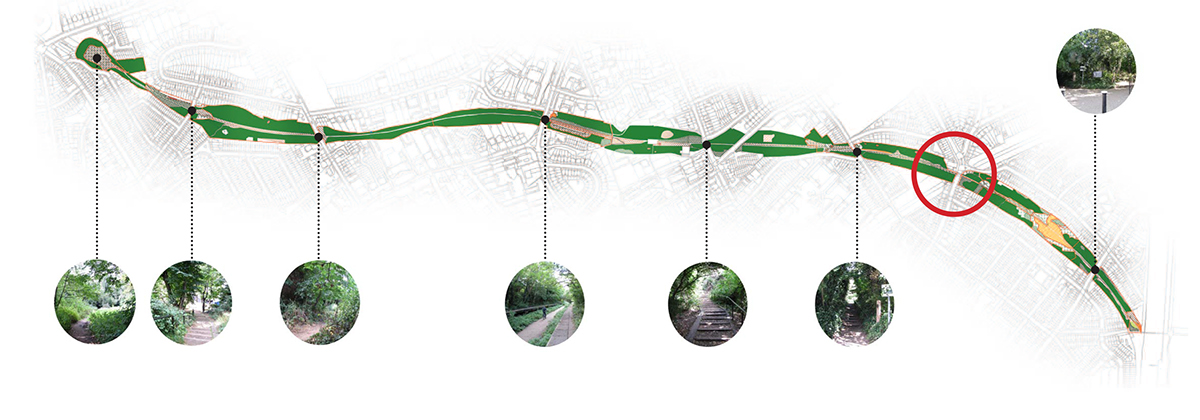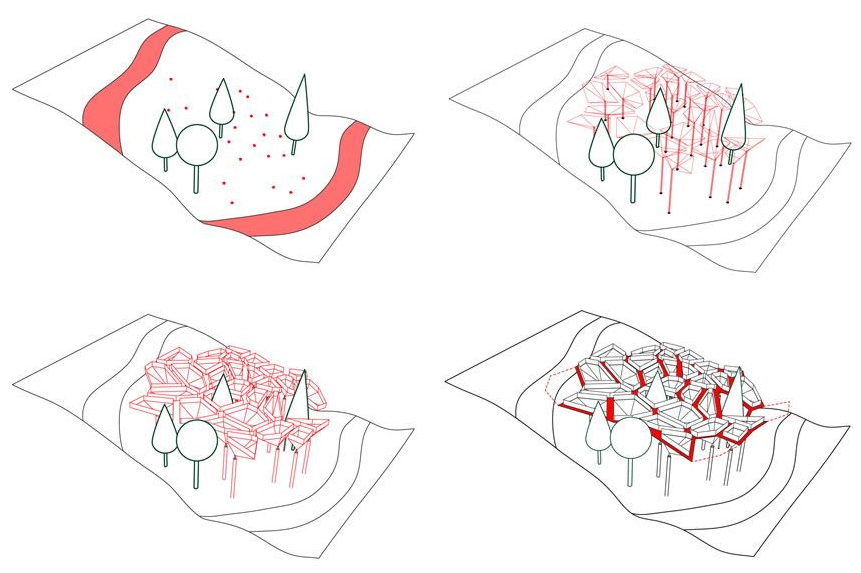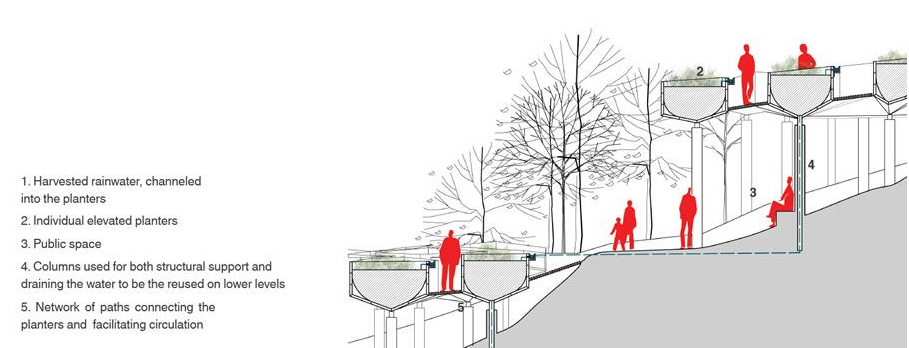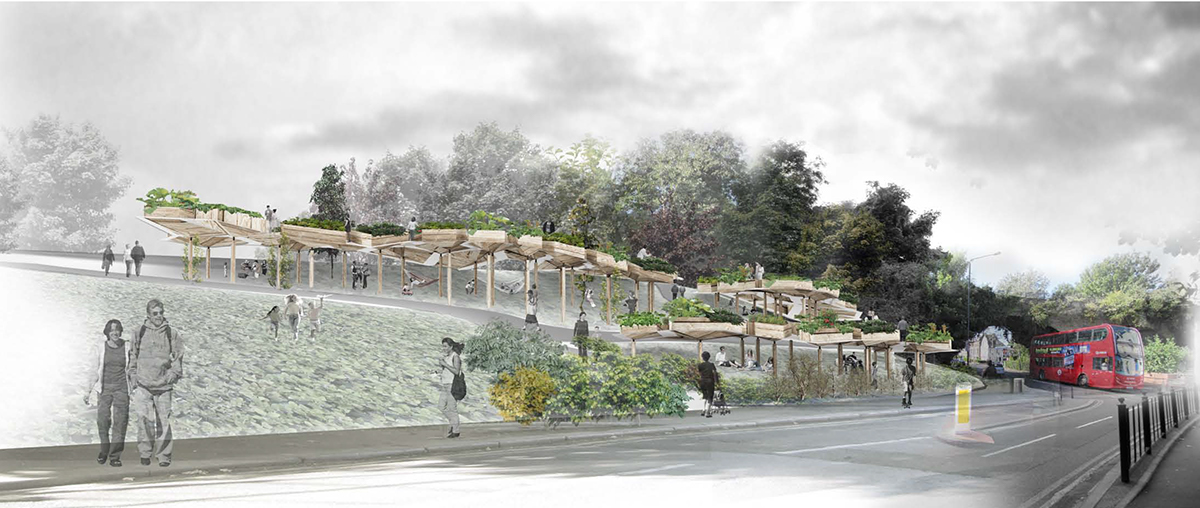Use green infrastructure as a catalyst for social cohesion
Cellular Landscape offers a methodology that could be applied to almost any underused public space. Inspired by the community assembled ‘hovering’ allotment garden in Grenville Gardens, Islington, the aim is to create collective public spaces underneath elevated vegetable boxes, which are maintained by the local community.
The pilot site for the proposal is Parkland Walk – a nature reserve on the remains of the former railway line linking Finsbury Park with Alexandra Palace. The Parkland Walk was officially opened in 1984 and is now a thriving natural habitat. Cellular Landscape would be situated on the previous site of Stroud Green Railway Station, where many paths emerge linking the streets below to various entry points on the line above.

Fig. 1 Parkland Walk trail
Design
The design of the allotment boxes is inspired by the structure of a leaf to symbolise how the design process, just like the infrastructure of the leaf, can simulate cell growth. One column holds each allotment box or ‘cell’. The elevated allotment garden provides the impetus to create seating and a usable public space beneath where allotment gardeners can socialise.

Fig. 2 Diagrams show the different stages of development as the allotment gardens evolve.

Fig. 3 Additional cells can be added as needed, as well as bird and bat boxes as each participating owner takes responsibility for their stake in the whole.

Fig. 4 A cross section of the elevated allotment garden at the old Stroud Green Railway Station.

Fig. 5 An aerial view showing how the individual allotment boxes or cells link together to form an elevated allotment garden.

Fig. 6 Cellular landscape explores whether green infrastructure can be a force for social cohesion.

